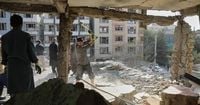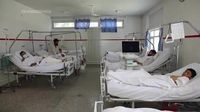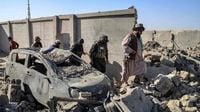Afghanistan and Pakistan, two neighbors with a long and troubled shared history, found themselves teetering on the edge of a deeper conflict this week. On Wednesday, October 15, 2025, Afghanistan’s Taliban government accused Pakistan of launching two drone strikes on Kabul, just hours before both countries agreed to a fragile ceasefire following days of deadly cross-border clashes. The United Nations, anxious about the rapidly escalating violence and its potential to destabilize the region, welcomed the truce and urged both sides to seek a lasting peace. But as the dust settles, questions linger over what triggered the latest round of violence and whether the ceasefire will hold.
The events unfolded with a grim sense of déjà vu. According to The Associated Press, the Taliban government announced on Thursday, October 16, that Pakistan had carried out two drone strikes on the Afghan capital the previous afternoon. Khalid Zadran, spokesman for the Kabul police chief, told reporters that "the strikes hit the city on Wednesday afternoon" and targeted a civilian house and a market. Hospital doctors confirmed to AP that five people were killed and dozens more wounded, many suffering from "shrapnel wounds, blunt force trauma and burns," as reported by Emergency, a nongovernmental organization running a surgical center in Kabul.
Initially, confusion reigned over the cause of the explosions. Taliban spokesman Zabihullah Mujahid first attributed the blasts to "an oil tanker explosion." However, as details emerged and accusations flew, the narrative shifted squarely onto Pakistan’s military. Islamabad, for its part, has not yet publicly responded to the Taliban’s latest accusation, leaving a cloud of uncertainty over the official version of events.
The strikes came at a particularly sensitive moment—just hours before the announcement of a ceasefire that temporarily halted the most intense confrontation between Afghanistan and Pakistan since the Taliban’s return to power in 2021. The fighting, which erupted on October 10, saw both sides exchange heavy fire along the disputed border, killing dozens and injuring hundreds. The United Nations Assistance Mission in Afghanistan (UNAMA) reported that, this week alone, 37 civilians were killed and 425 wounded in Afghanistan due to cross-border shelling and airstrikes. Most of the casualties occurred in the southern provinces of Paktya, Paktika, Kunar, Khost, Kandahar, and Helmand.
Pakistani officials, speaking anonymously to The Associated Press because they were not authorized to discuss ongoing military operations, said their forces had targeted militant hideouts on Wednesday. They claimed that security forces killed "dozens of militants" who had crossed over from Afghanistan into the Mohmand district of northwest Khyber Pakhtunkhwa province. The officials described how the militants were detected and "neutralized" during an exchange of fire. However, Pakistan has not released its own civilian casualty figures, and the lack of transparency has only fueled speculation and mistrust on both sides.
The border between Afghanistan and Pakistan—the 2,611-kilometer (1,622-mile) Durand Line—has long been a flashpoint. Drawn by colonial powers in the late 19th century, the Durand Line has never been formally recognized by Kabul, and disputes over its legitimacy have simmered for decades. The recent violence is just the latest chapter in a saga marked by mutual suspicion, cross-border militancy, and periodic skirmishes.
Cross-border violence has intensified since October 10, with both countries accusing each other of armed provocations. Pakistani officials have consistently maintained that militants based inside Afghanistan are responsible for repeated attacks on their soil—a charge the Taliban denies. This tit-for-tat blame game has made it difficult for either side to claim the moral high ground, and the civilian population has borne the brunt of the violence.
The ceasefire, announced late Wednesday after appeals from regional powers, was greeted with cautious optimism. According to Mathrubhumi, the truce was brokered after intense fighting that killed dozens and wounded hundreds on both sides, temporarily halting what has been the deadliest confrontation between the neighbors since 2021. The United Nations quickly welcomed the move, with UNAMA stating, "UNAMA calls on all parties to bring a lasting end to hostilities to protect civilians and prevent further loss of life." The mission’s statement underscored the heavy toll the conflict has taken on ordinary Afghans, particularly in the south.
The timing of the ceasefire was not coincidental. Regional powers, alarmed by the possibility that the violence could further destabilize an already volatile area where groups like the Islamic State and al-Qaida are seeking to regroup, pressed both Kabul and Islamabad to pull back from the brink. The specter of a wider conflict, with extremist groups waiting in the wings, was enough to bring both sides to the negotiating table—at least for now.
Yet, even as the guns fell silent, uncertainty lingered. Key border crossings remained closed on Thursday, and there were no reports of renewed fighting overnight. Still, no one was under any illusion that the ceasefire marked a definitive end to hostilities. As one senior UN official told The Associated Press, "It remains unclear whether the ceasefire will hold." The lack of trust, the absence of clear communication between the two governments, and the ongoing presence of armed groups in the borderlands all suggest that peace, if it comes, will be hard-won and fragile.
For Afghans living in the affected provinces, the ceasefire brings a temporary respite but little comfort. Many have grown weary of the cycle of violence and reprisal, and there is widespread skepticism that either side is truly committed to a durable peace. As Emergency’s medical teams treated the wounded in Kabul, the broader humanitarian toll became clear. Civilians continue to pay the highest price for political and military decisions made far from their homes.
Meanwhile, the international community is watching closely. The United Nations, regional powers, and humanitarian organizations have all called for restraint and dialogue. The hope is that the current truce can be transformed into a more lasting agreement—one that addresses not just the immediate security concerns but also the deeper grievances that have fueled decades of mistrust along the Durand Line.
As the world waits to see whether Afghanistan and Pakistan can move beyond this latest crisis, the stakes could hardly be higher. The potential for renewed violence remains, but so too does the possibility—however slim—of a new chapter in the fraught relationship between these two neighbors. For now, the people of Kabul and the border provinces can only hope that their leaders choose dialogue over destruction.






